Whenever we visit Opotiki, we like to stay at the headquarters of Motu Trails Ltd on St John Street—a few minutes walking distance from the town centre.
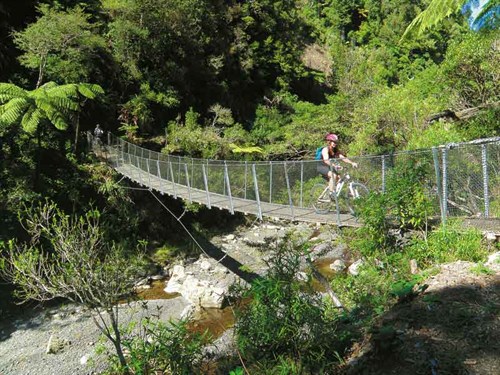
This is a Park Over Property for NZMCA members, which has been convenient when we have used the shuttle service and have had early starts.
There are three cycle trails under the Motu Trails umbrella: the Dunes Trail, which is rated easy; the Motu Road Trail, rated intermediate; and the Pakihi Track for advanced riders.
The Dunes Trail
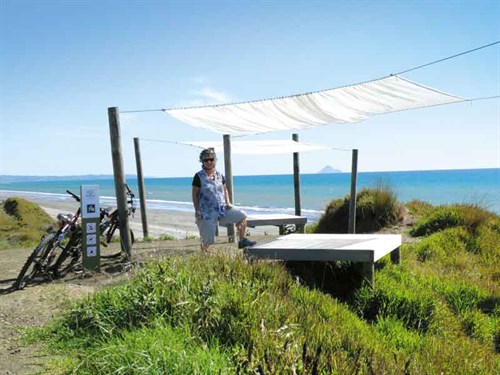
On our first visit, we decided to ride the Dunes Trail that starts just 800 metres along the road from Motu Trails Ltd.
At the end of the road, we left the township and cycled across the Pakowhai ki Otutaopuku Bridge, which opened in 2012. The bridge is a landmark, with brightly painted pou and information panels.
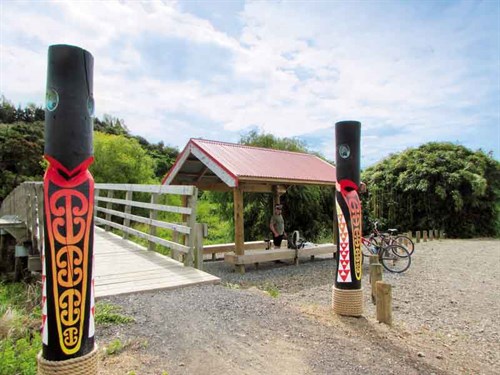
When the area around the Otara River saw its first settlement, it was known as Pakowhai but changed its name after Tarawa—an ancestor of local Maori—made landfall, claiming to have swum from Hawaiki with his pet fish. He found a pool for his fish and re-named the place in their honour: O-Potiki mai-Tawhiti, meaning ‘two pets from afar’.
The Dunes Trail was a lovely ride. It was flat and meandered around and over the dunes for 10km. The track was wide and easy to cycle, which was good because I found it hard to keep my eyes off the view out to sea and along the coast.
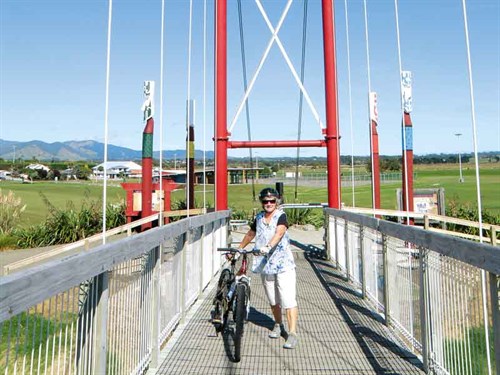
The waters of the Pacific sparkled all the way out to White Island and sandy beaches stretched into the distance, with the rugged cliffs and mountainous interior of East Cape on the horizon.
Before long, we came to Hukuwai where a signboard explained how, in the days gone by, Maori would set nets for the large schools of fish that arrived off this beach. Further on, the trail looped down close to the road beside a toilet block and a freedom camping area.
We vowed to park here on another visit to Opotiki; what could be better than waking up with the sea on your doorstep?
The trail continued, crossing a stream with a guardian pou, before we found ourselves cycling along a wooden boardwalk across the beach.
Finally, we passed behind Tirohanga Beach Motor Camp (which looked like another great place to park up) before terminating at Jackson Road. We retraced our steps a little, finding a quiet beach for a picnic lunch before riding back to Opotiki. The ride took about three hours with plenty of time to stop and enjoy the view and read the information signs.
Motu Road
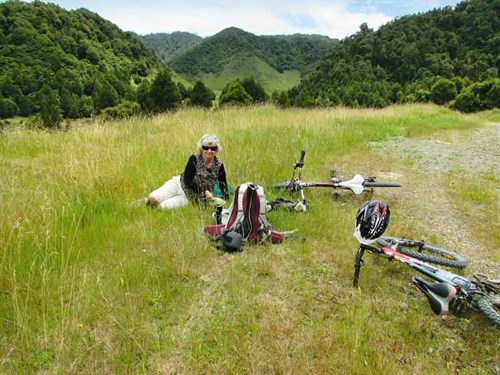
This one was quite different from the coastal Dunes Trail. It started up in the mountains—an hour’s drive from Opotiki through the Waioeka Gorge—and it was a steep, rough ride down to sea level through bush and farmland.
The Motu Road used to be the main route between Gisborne and Opotiki before the Gorge Road was built, but the road itself wasn’t built until 1918, and it was long after that, the road surface was metalled and bridges were built to replace fords.
More recently, in the 1980s and ’90s, the road has been used as a stage in the Rally of New Zealand. Vehicles still use the road but mostly 4WDs, as it is a rugged drive.
The Waioeka Gorge Road (SH2) may have replaced the Motu Road as the main thoroughfare, but it is a tortuous highway, passing between steep-sided hills.
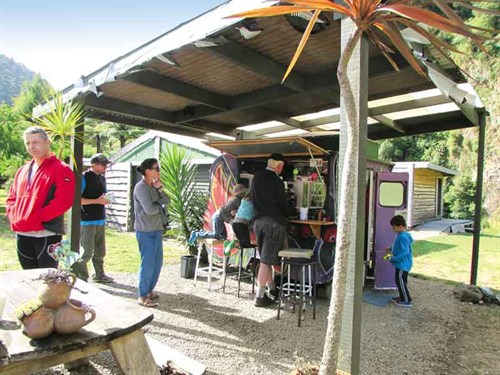
Work started on the road in the 1930s but wasn’t opened until 1962. There were attempts at farming in the 1900s but the land was steep and the soil poor. The cleared areas have reverted to bush and are part of the Waioeka Gorge Scenic Reserve, New Zealand’s largest scenic reserve.
We couldn’t stop to visit the various sites of interest through the gorge but added them to the mental list of ‘things to do next time’. We did stop, however, at the Water Bush Cafe (tucked into a clearing) for coffee and home baking before the driver continued on through Matawhai and Motu to the drop off spot where we unloaded our bikes and set off down the road.
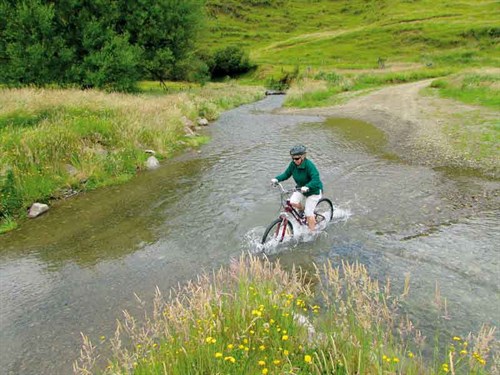
It was misty and mysterious high up in the beech-forested hills, but as we descended, we began to get more views. Lower down, we cycled through areas of rainforest where tawa and puriri towered over the canopy.
Eventually, we passed through more open countryside (with one exciting ford to negotiate) before coming out into farmland and eventually arriving at the end of Jackson Road where the Dunes Trail began. We got back to our bus after riding for about five hours.
Pakihi Track
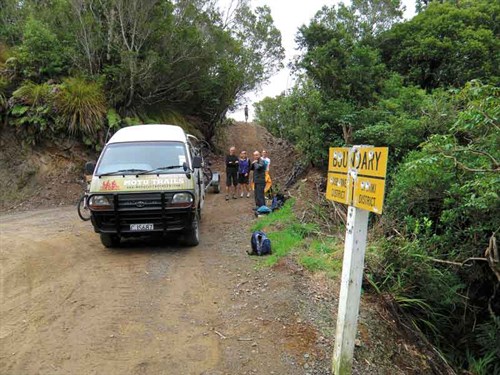
I decided not to tackle the Pakihi Track, so Malcolm went alone. The shuttle dropped him on the Motu Road at the boundary between the Gisborne and Opotiki Districts and, after 17km, he turned onto the Pakihi Track.
Originally formed to drive cattle, the track was abandoned after a few years when the bridge was washed away. The cycle trail is narrow with sharp bends and steep drop-offs, so take extra caution.
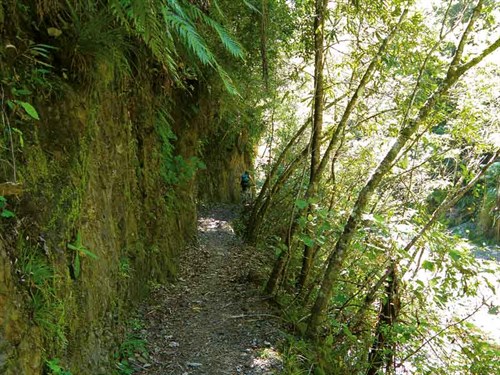
Just past the halfway point, there was a hut (a good lunch spot) and shortly after this, a suspension bridge. The remains of the old bridge could be seen here.
Malcolm particularly enjoyed the next part of the track, which followed a stream with dramatic scenery and stunning views. The last section of the track came out on a quiet rural road leading into Opotiki and he arrived home after about four hours of riding.
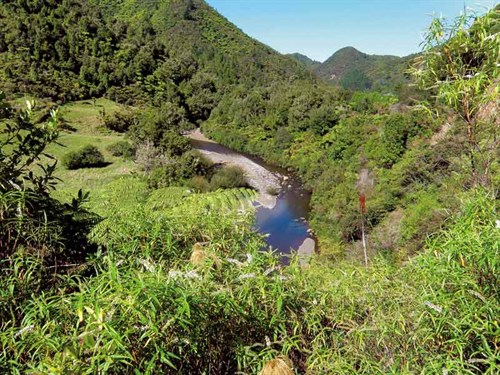
Further information
- For more details on the Motu Trails, visit motutrails.co.nz and motucycletrails.com
- To find out more about Opotiki, visit opotikinz.com and for information about the Waioeka Gorge there is a downloadable brochure, The Waioeka Journey at doc.govt.nz
- Bike hire and shuttle services are available from Motu Trails, 138 St John St, Opotiki
- The Motu Road Trail and Pakihi Track are in remote areas with little mobile coverage and no shops, so take adequate food and water and also cycle repair and first aid kits
- There are several campgrounds and holiday parks in Opotiki and the NZMCA has a park adjacent to Motu Trails Ltd headquarters





